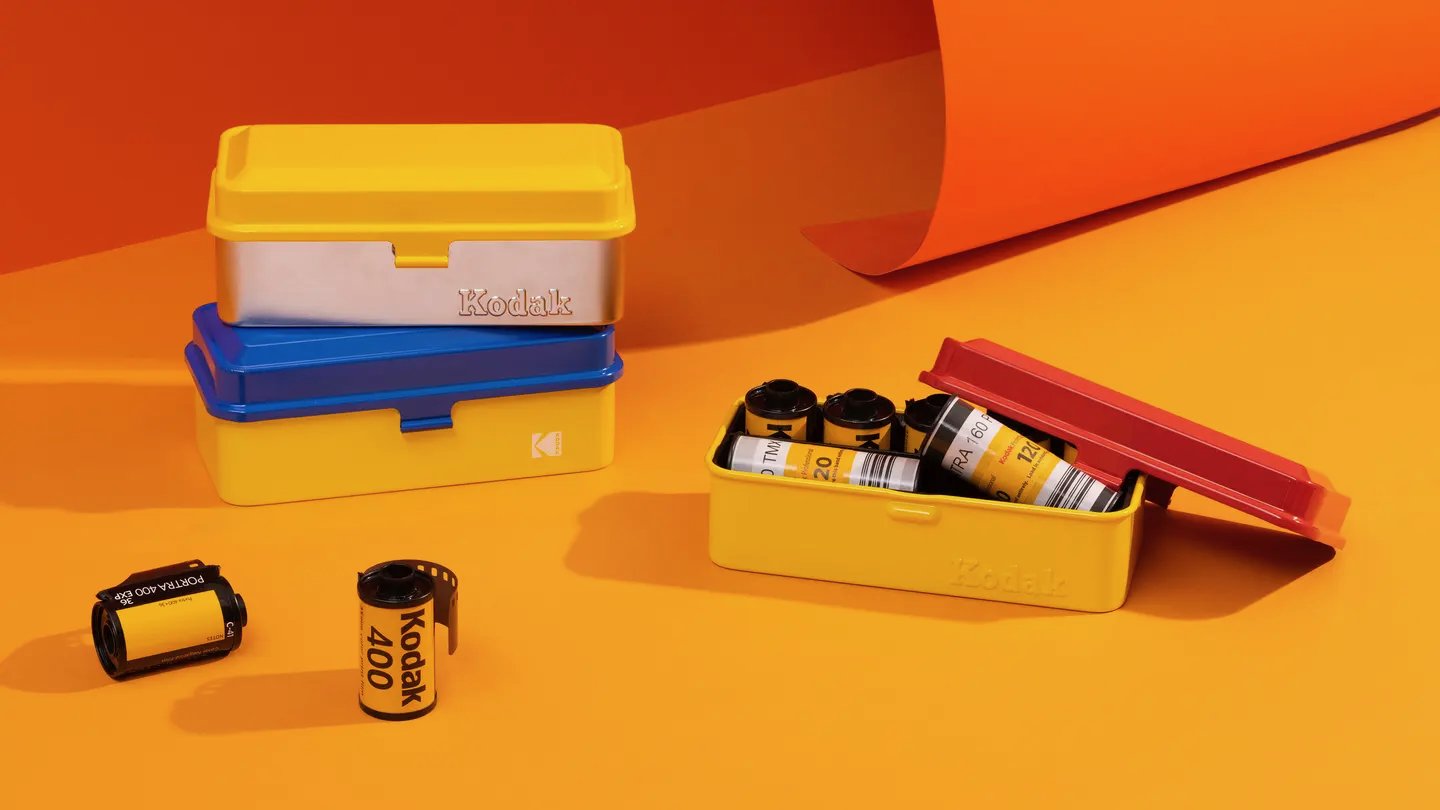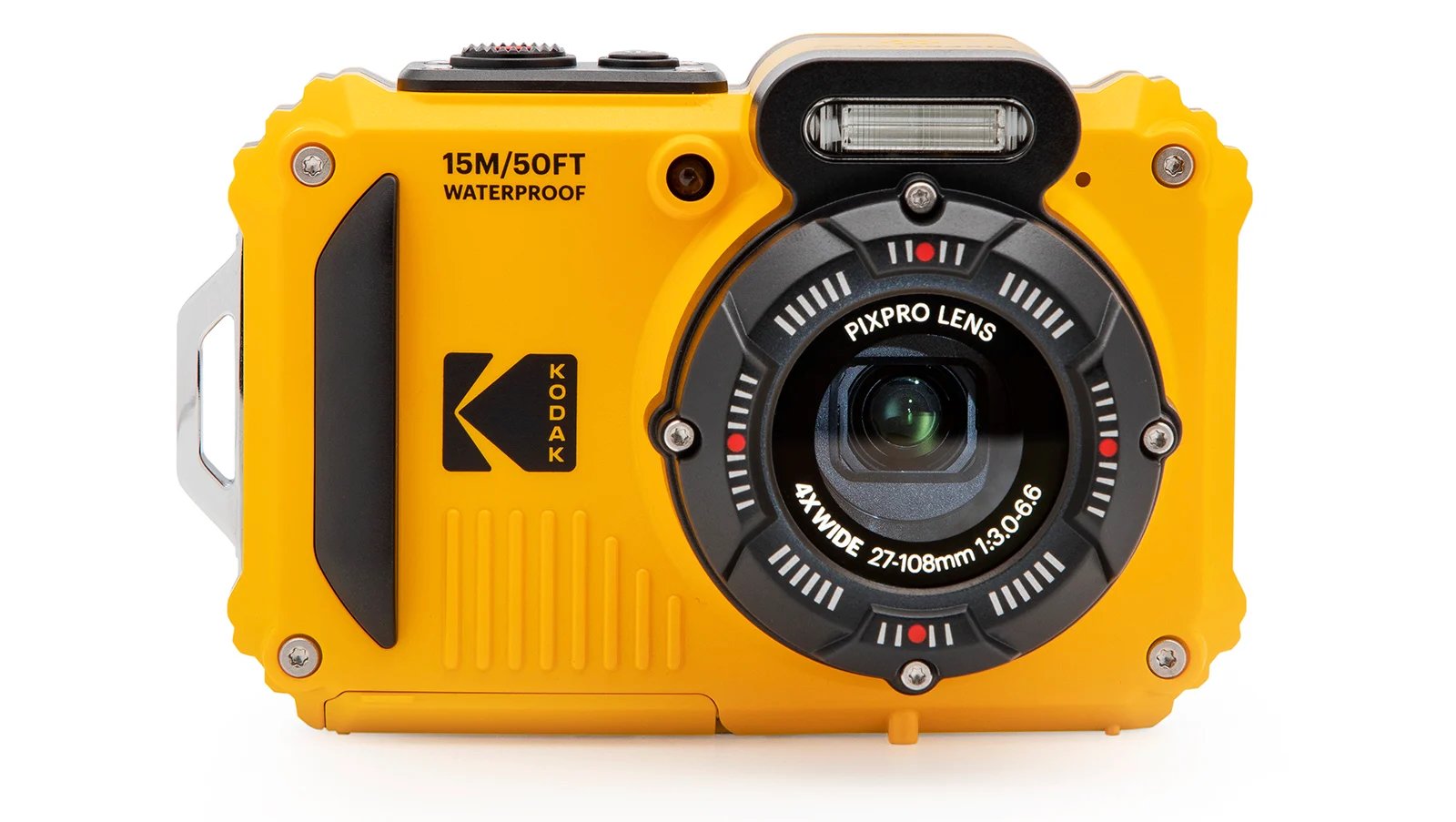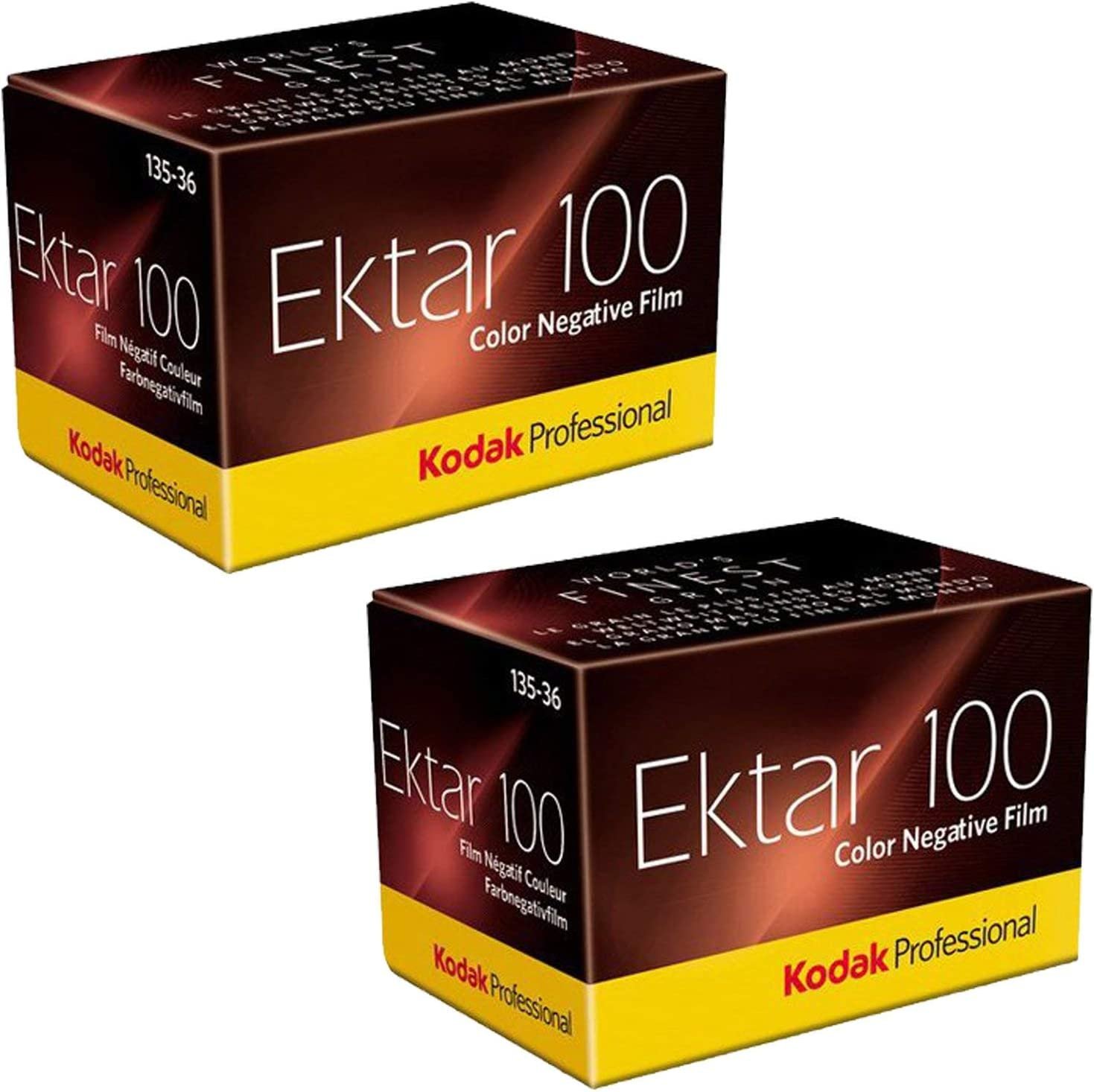Kodak - Understanding the Product Line
Few names in photography are as ubiquitous as Kodak. Founded by George Eastman in 1888, the company fundamentally revolutionized photography, making it accessible to the everyday consumer with the introduction of the simple-to-use, inexpensive Kodak Brownie. The company has a rich history that spans over a century, creating some of the most iconic film types, cameras, and developing processes in the industry. Today, Kodak still has a significant influence, particularly in film photography, and its legacy lives on through various products in the photography market.
Kodak's Influence in the Evolution of Photography
Kodak's influence on the evolution of photography is immeasurable. By introducing the first mass-market camera and affordable film, Kodak truly brought photography to the masses. This democratization of photography changed the way we capture and share moments, shaping societal memory and our relationship with images. Furthermore, their continual innovation in film and printing technology has had a profound impact on both the amateur and professional photographic landscape.
Kodak Film Cameras
Overview of Kodak's Legacy in Film Cameras
Kodak's legacy in film cameras is steeped in history and innovation. From the first simple-to-use Kodak camera of the 1880s, which came pre-loaded with enough film for 100 exposures, to the iconic Kodak Brownie and the sophisticated Kodak Retina series, Kodak has pioneered many of the technologies we take for granted today in film photography.
Highlighting Specific Models
Let's highlight a few key models that marked Kodak's journey. The Kodak Brownie, launched in 1900, made photography truly popular. Its simplicity and affordability allowed anyone to take pictures, initiating a democratic shift in photography's reach. The Kodak Retina series, produced from the 1930s to the 1960s, was renowned for its compact design, excellent optics, and introduction of the 35mm film format, which would later become a universal standard.
Advantages of Using Kodak Film Cameras
Using Kodak film cameras offers several advantages. They invite a slow, contemplative approach to photography, encouraging a stronger connection to the subject. The aesthetic qualities of film, including natural colors, wide dynamic range, and unique grain patterns, give photos a distinct, often nostalgic feel. Kodak cameras, known for their reliability and user-friendly designs, offer a tangible, hands-on experience that many photographers still value today.
Potential Drawbacks of Film Photography
While film photography has many enthusiasts, it's worth considering its potential drawbacks. Film photography requires a higher initial investment than digital, with ongoing costs for film rolls and development. It also lacks the immediate feedback that digital photography offers, potentially making it more challenging for beginners. Lastly, film cameras, especially vintage ones, may need regular maintenance and can be more delicate than their digital counterparts. However, many find that these challenges add to the charm and rewarding nature of film photography.
Kodak Digital Cameras
Introduction to Kodak-branded Digital Cameras by JK Imaging Ltd.
Since 2013, the Kodak brand for digital cameras has been licensed to JK Imaging Ltd. Their range of digital cameras combines the nostalgic charm of the Kodak brand with contemporary imaging technology. The digital cameras bear the iconic Kodak logo, appealing to photographers who fondly remember the brand's photographic heritage.
Breakdown of Main Camera Models
The mainstay of the Kodak digital camera line by JK Imaging Ltd. is the PIXPRO series. These cameras come in a variety of models, including Friendly Zoom point-and-shoot cameras, Smart Lens cameras, and the more advanced AZ and Astro Zoom bridge cameras. Each model is designed to cater to different levels of photographic expertise, from novices to seasoned enthusiasts.
Advantages and Unique Features of These Cameras
Kodak digital cameras offer several advantages. The Friendly Zoom series, for example, is designed for simplicity and ease of use, making it an ideal choice for beginners or those looking for a hassle-free shooting experience. The Smart Lens cameras offer the unique ability to transform a smartphone into a powerful camera, combining the ease of phone photography with superior lens quality. The AZ and Astro Zoom series offer a great balance of manual control and high zoom capabilities, making them versatile choices for those seeking more advanced features without shifting to a DSLR or mirrorless system.
Possible Disadvantages or Limitations
Despite their merits, there may be some limitations to consider with Kodak digital cameras. For seasoned photographers seeking advanced control over their images, Kodak's digital offerings might lack the full suite of manual controls and lens interchangeability found in higher-end DSLR or mirrorless systems. Also, while carrying the Kodak brand, these cameras are not actually manufactured by Kodak, which may be a consideration for brand purists. It's important for each photographer to evaluate their individual needs and see if a Kodak digital camera is the right tool for their artistic vision.
Kodak Film Products
Overview of Kodak's Film Line
At the heart of Kodak's legacy is their line of film products, a collection that has played an integral role in the history of photography. Kodak's film series include popular names like Ektar, known for its vibrant color and ultra-fine grain, and Portra, lauded for its exceptional skin tones and natural color reproduction, making it a favorite among portrait and wedding photographers. Then there's Tri-X, an iconic black and white film famous for its rich tonal gradation and flexibility, a darling of photojournalists and street photographers alike.
Distinct Qualities and Advantages of Using Kodak Film
There is a unique allure to shooting with Kodak film that digital sensors have yet to replicate. Each film type provides its own characteristic 'look'—from the rich, warm colors of Portra to the gritty, high-contrast feel of Tri-X. Shooting with film also encourages mindfulness and patience in the shooting process, as each frame counts. Moreover, using film can inspire creativity, as it invites photographers to experiment with different development processes to alter contrast, grain, and tones.
Potential Challenges of Using Film
While the charm of film photography is undeniable, it does come with some challenges. First, film is a consumable—each roll can only be used once, and purchasing and developing film can add up in costs. Second, film photography requires a different workflow than digital, often involving more time and a physical process if you choose to develop your own film. Lastly, unlike digital files that can be duplicated endlessly without quality loss, film negatives can degrade over time and must be stored properly. Despite these challenges, many photographers find the rewards of shooting with film outweigh these potential downsides.
Kodak Photographic Paper and Printing Solutions
Kodak's Contribution to the Printing Industry
Beyond cameras and film, Kodak has made significant contributions to the printing industry. They've brought photography to life through their array of printing solutions, playing a crucial role in shaping how photographs are shared and enjoyed.
Understanding Different Types of Kodak Photo Paper
Kodak offers a variety of photo paper types to cater to different needs. From their Professional Endura Premier Paper known for its striking colors and incredible detail, to the Metallic Photo Paper with its unique, glossy finish that gives images a striking, almost three-dimensional look. Each type of Kodak photo paper offers different textures, finishes, and color reproductions, allowing photographers to choose the best medium to showcase their work.
Advantages of Kodak Printing Products
Using Kodak's printing products can enhance the final output of your images. Kodak's photo papers are praised for their wide color gamut, sharp detail, and archival quality, which helps ensure your prints stand the test of time. Plus, their range of products allows photographers to experiment with different looks and feels for their prints, adding another layer of creativity to the process.
Possible Disadvantages
On the downside, high-quality photo papers like those from Kodak tend to be more expensive than lower-quality alternatives. Additionally, for the best results, these papers should ideally be used with a high-quality printer, further adding to the cost. Some photographers also find it challenging to predict how the printed image will look compared to the digital file, leading to a trial-and-error process which may involve wasted paper and ink. Despite these potential obstacles, many professionals and hobbyists alike believe the superior quality of Kodak's photographic papers are worth the investment.
Selecting Kodak Products for Your Photography Needs
Assessing Your Needs as a Photographer
Choosing the right photography gear is not a one-size-fits-all endeavor; it heavily depends on your personal needs and preferences as a photographer. When evaluating Kodak's product offerings, it's important to ask yourself some questions: Do you prefer the unique aesthetic of film or the convenience and flexibility of digital? Are you an enthusiast capturing life's moments, or a professional needing high-grade equipment for work? Reflecting on these aspects can help guide your selection process.
Suggestions Based on Different Photography Styles and Environments
Kodak's vast range caters to various photography styles and environments. If you're into street photography or photojournalism, the compact size and quiet shutter of a Kodak 35mm film camera can be a perfect fit. For those passionate about landscapes, a Kodak PIXPRO digital camera offers the resolution and dynamic range to capture breathtaking scenes. If you're a fine art photographer, the unique aesthetic qualities of Kodak's film line, such as the warm tones of Portra or the stark contrasts of Tri-X, can help create distinctive, gallery-worthy prints.
Considering the Value and Durability of Kodak Products
The value of Kodak products extends beyond their reasonable prices. Their film cameras are known for their durability and longevity, often functioning flawlessly even after decades of use. Kodak's film, known for its distinctive color rendition and wide exposure latitude, continues to be a top choice among film photographers worldwide. Additionally, their photographic paper and printing solutions offer top-notch quality that stands the test of time. While Kodak products may require an initial investment, their durability, unique characteristics, and the timeless quality they lend to images offer a return that is often more than worth it.
Conclusion
Final Thoughts on Kodak's Product Line and Its Role in Contemporary Photography
Kodak's product line presents an intriguing blend of tradition and innovation, offering tools that help photographers at all levels express their creative vision.
Kodak was once the leader in the world of photography. However, in recent years, the company has failed to keep up with the times. The rise of digital photography and smartphones with high-quality cameras has left Kodak in the dust. Instead of innovating and adapting, Kodak was slow to make the transition to digital and instead relied heavily on traditional film. The company also failed to capitalize on the popularity of social media, which has become a driving force in the world of photography. As a result, Kodak has struggled to remain relevant and has even filed for bankruptcy in the past. Although the company still exists, its glory days are long gone, serving as a cautionary tale of what can happen when a business fails to keep up with the changing times.
You might also be interested in:







